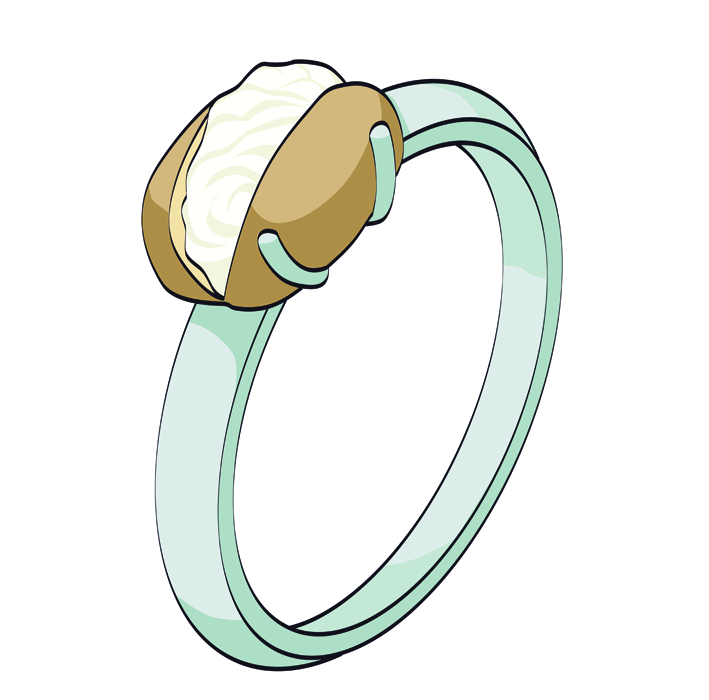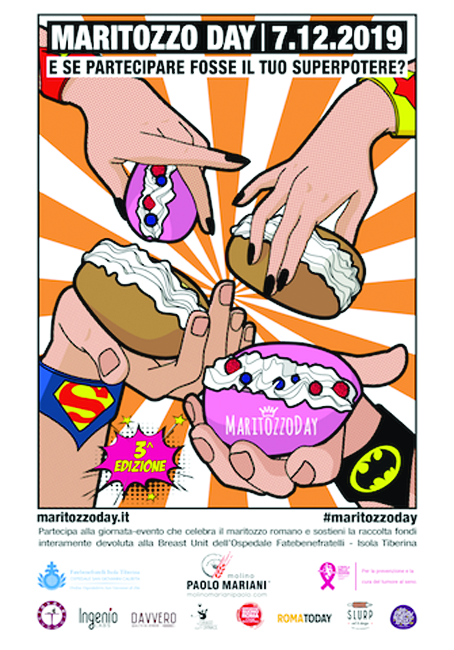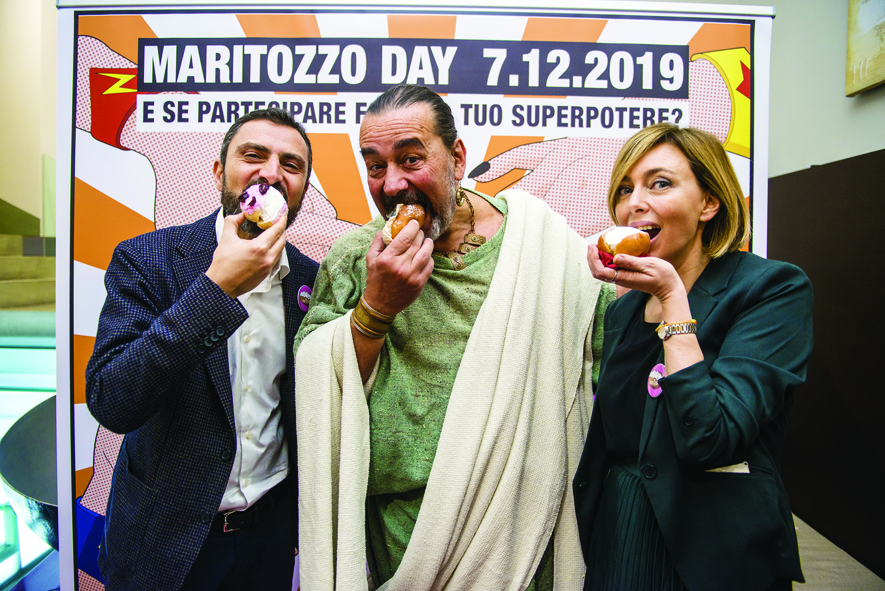By Mother Martha
 While gelato, panettone, cannoli, torrone, and tiramisù are beloved worldwide, other Italian sweets are less well-known and even regional. Some examples are bônet in Piemonte, sbrisolona in Lombardy, torta Barozzi in Emilia-Romagna, tozzetti in Tuscany and Umbria, sfogliatelle, babà, struffoli and la pastiera in Naples, seadas in Sardinia, and cassata and granite of multiple flavors in Sicily. In Rome for centuries now, the local sweet is the maritozzo, under-publicized outside Caput Mundi.
While gelato, panettone, cannoli, torrone, and tiramisù are beloved worldwide, other Italian sweets are less well-known and even regional. Some examples are bônet in Piemonte, sbrisolona in Lombardy, torta Barozzi in Emilia-Romagna, tozzetti in Tuscany and Umbria, sfogliatelle, babà, struffoli and la pastiera in Naples, seadas in Sardinia, and cassata and granite of multiple flavors in Sicily. In Rome for centuries now, the local sweet is the maritozzo, under-publicized outside Caput Mundi.
Many Italian foods are celebrated on a specific day of the year. For the past three years Maritozzo Day has been December 7.
At the press conference to present this third celebration, the scholar, home poet, and city guide Giggi Cartoni, nicknamed “Er Salustro” after the famous 19th-century Roman poet Trilussa, gave a brief history of this soft bun of oblong shape, a kind of bread traditionally made of flour, eggs, olive oil, salt, and honey, and then “dressed-up” for special occasions.
In ancient times this “loaf” was baked and then seasoned with honey and raisins. Its name derives from the Latin, mas, maris meaning man or companion/co-worker. The farmers’ fast food, it gave them enough energy to work all day in the fields without returning home for lunch.
During the Middle Ages, these loaves were one of the few “Church-approved” “treat” foods that the Romans were permitted to eat while fasting during Lent. Their filling of raisins, pine nuts, and candied fruit made them a kind of “sweet fix.” Hence it was nicknamed “Santo Maritozzo.”
Recipes for such loaves started to appear in cookbooks in the 1700s, but it wasn’t until the 1800s that the “loaves” were given their current name maritozzo, an affectionate dialect version of the Italian word marito or husband. According to tradition, on March 1 or the first Friday of that month, a girl’s fiancé would give his bride-to-be this pastry, its icing on top depicting two pierced hearts. Inside he concealed a gift: a ring or other small gold object.
During the first half of the 20th century the maritozzo, baked not as a loaf but bun-size, was considered a pastry for the upper classes. The “in” pastry-bar was the historic Caffè Greco, founded in 1760 on elegant Via Condotti and now at risk of closing at least temporarily due to an eviction notice because its owner wants to raise the management’s rent of 17,000 euros per month to an unaffordable 150,000 euros.
After the Second World War, the “in” location moved to the Via Veneto and the maritozzo was split open and filled with whipped cream. Its other fillings, now both sweet and salty, date to 2017’s first Maritozzo Day.
This year’s event differed from the two earlier Maritozzo Days. For the first time it was celebrated outside Rome, in cities throughout Italy: Milan, Turin, Brescia, Città di Castello, Viterbo, Siracusa and Trapani.
Secondly, some of the participating health-concerned pastry chefs colored their maritozzi “rosa” or “pink” by adding red and dried fruits or other natural colorings, like beet juice, and seeds to unrefined flour, only a tiny amount of sugar or its natural substitutes, and no gluten or lactose. Thus people with chronic health problems like diabetes or cancer patients undergoing treatments could eat them.
Thirdly and most importantly, in order to participate it was necessary to download a personal coupon from the website www.maritozzoday.it, where there was a list of the over 30 Roman participants and the ingredients of their many proposed fillings, as well as a map of their locations so you could personalize your itinerary.
Most were pastry shops and coffee bars, but some were restaurants including “All’Oro” with one Michelin star, which offered maritozzi to their guests as dessert in the evening, even though maritozzi are a breakfast dish.
Among the non-traditional sweet whipped cream fillings offered were “Black Forest,” “Sacher” and “Oreo.” When it came to salty, many fillings were based on Roman specialties: spaghetti alla carbonara, coratella and artichokes, coda alla vaccinara, mortadella and puntarelle, and trippa.
Upon presentation of the downloaded coupon, each maritozzo, for as long as the supply lasted, cost one euro, which was donated to the Breast Unit of the Vatican’s Fatebenefratelli Hospital on Rome’s Tiber Island for the purchase of cold caps to reduce the loss of hair during chemotherapy.
Nota bene: Whether you are a resident of Rome or a future visitor, be sure to print the list of participants so you can plan your own maritozzi itinerary.

the classic maritozzo with whipped cream

the publicity poster

the day’s promoters with Giggi Cartoni (center)

a strawberry-flavored maritozzo






Facebook Comments